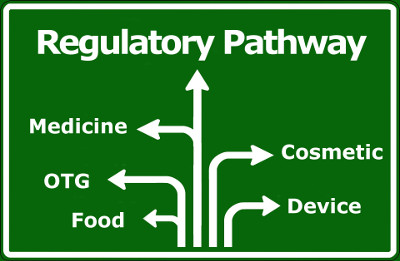Posted on March 16, 2016
An increasing number of traditionally pharma/device companies are crossing boundaries to offer their patients a product portfolio spanning several product categories. Examples include medical devices that support delivery and tracking of patient medication as well as cosmetic and sunscreen line extensions that supplement a medicine range. Other therapeutic goods (OTGs) include tampons and disinfectants, however disinfectant hand rubs are regulated as medicines. Additionally, the desire to extract more and more health benefits from our food has resulted in the food/medicine boundary being pushed further than ever before.
So what is it about my product that defines its regulatory pathway?
The most appropriate regulatory pathway is not always a straight forward decision, however is likely to significantly impact the contents of your supporting technical file, especially where products are classified differently in different countries. If you are not building the correct supporting technical file or medicine dossier during the planning and development phase you might find you need to modify your labels claims or undertake rework at a later date to meet regulatory requirements.
There may be several regulatory pathways that may apply to your product, depending on how it is intended to be used, so it’s important to bed down the target indication/intended purpose early.
Be careful with cosmetics making therapeutic claims as these may require a medicine listing on the Australian Register of Therapeutic Goods (ARTG). Such cosmetics may be arriving from countries where GMP evidence is lacking.
The recent update to the Food Standards for Australia and New Zealand (FSANZ), effective 01 March 2016, provides users with long-awaited clarity and a more user-friendly format. However, again, be careful with claims that cross the therapeutic barrier into listed medicines.
Where deliberate or unintended, some alterations to labels claims can turn a medicine into a cosmetic or food and vice versa.
Labelling and advertising regulations can also differ between each of these product classes, creating a tug-of-war between local compliance and global harmonisation.
This article was written by our Director, Regulatory Services, Jeanette Lodge
Should you find yourself in such a predicament, and need some assistance navigating the various regulatory pathways, Commercial Eyes would be happy to share our experience. You can reach us on + 61 3 9251 0777.
